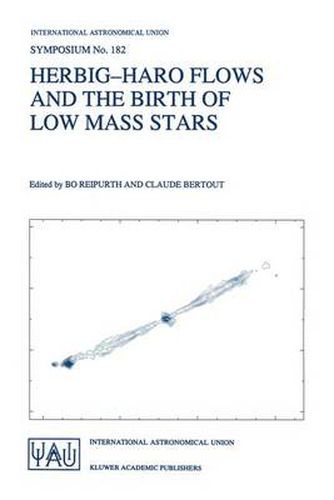Readings Newsletter
Become a Readings Member to make your shopping experience even easier.
Sign in or sign up for free!
You’re not far away from qualifying for FREE standard shipping within Australia
You’ve qualified for FREE standard shipping within Australia
The cart is loading…






In addition to being fascinating astrophysical laboratories in their own right, Herbig-Haro flows have in recent years emerged as key phenomena in our attempts to understand the complex and violent processes that govern the birth of low mass stars. This work provides an overview of the major advances which the study of Herbig-Haro jets has enjoyed since 1995. On the observational side, Hubble Space Telescope images have revealed the intricate details of the shock structures in these supersonic flows, millimetre interferometry and infrared imaging can now probe the detailed structure of the molecular component of deeply embedded jets, and sub-millimetre and radio continuum maps now enable us to study the near environment of the optically invisible driving sources of jets. On the theoretical side, detailed numerical and analytical magnetohydrodynamic models have reached a level of sophistication that allows realistic comparison with observations and insights into the jet formation mechanisms. Similarly detailed observational and theoretical studies of the disks and winds of T Tauri stars are now gradually being linked to the Herbig-Haro flows, providing a first glimpse of how stars can be born by both accreting and ejecting infalling material.
$9.00 standard shipping within Australia
FREE standard shipping within Australia for orders over $100.00
Express & International shipping calculated at checkout
In addition to being fascinating astrophysical laboratories in their own right, Herbig-Haro flows have in recent years emerged as key phenomena in our attempts to understand the complex and violent processes that govern the birth of low mass stars. This work provides an overview of the major advances which the study of Herbig-Haro jets has enjoyed since 1995. On the observational side, Hubble Space Telescope images have revealed the intricate details of the shock structures in these supersonic flows, millimetre interferometry and infrared imaging can now probe the detailed structure of the molecular component of deeply embedded jets, and sub-millimetre and radio continuum maps now enable us to study the near environment of the optically invisible driving sources of jets. On the theoretical side, detailed numerical and analytical magnetohydrodynamic models have reached a level of sophistication that allows realistic comparison with observations and insights into the jet formation mechanisms. Similarly detailed observational and theoretical studies of the disks and winds of T Tauri stars are now gradually being linked to the Herbig-Haro flows, providing a first glimpse of how stars can be born by both accreting and ejecting infalling material.